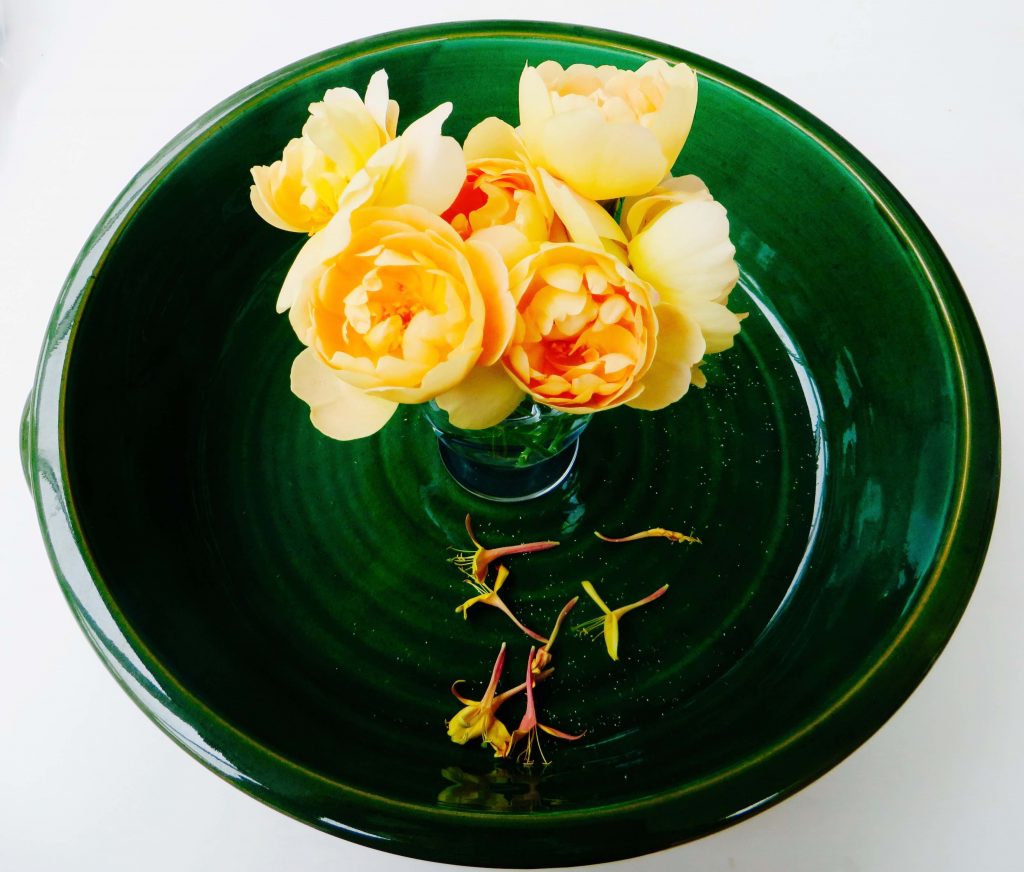After watching Chris Packham (Springwatch) on television, we decided to let our (small) lawn grow wild this year – except for a narrow path, (which I snipped with scissors), running through the middle, so I could get to the washing line. It meant that in the morning my feet and ankles were covered in dew – I got to like this, knowing we were offering a home to lots more insects. For the first time in ages I saw an earwig – it fell from one of the drying sheets on the line into the grass. Just as well I didn’t meet it in bed!
Insects have declined by 75% in the last fifty years. Without them, the planet ecosystem will not survive and that means we won’t either. In 1963 Rachel Carson’s book, ‘Silent Spring’ warned that the amount of pesticides being used was destroying not only insects but soils too. More recently, climate change has highlighted this.
To know more, read ‘The Silent Earth: Averting the Insect Apocalypse’ (£20) by Dave Goulson, who is a professor of biology at the University of Sussex. He has also written a book on the different types of bees and founded the ‘Bumblebee Conservation Trust’.
We are slowly waking up to the reality of our depleting ecosystems but we need to act much faster. There is still hope as long as we manage to convince most people of the danger in time and get many countries involved in regeneration. Nature doesn’t recognise man made borders. We have a difficult task ahead but more and more people, both young and old, are taking up the challenge. A programme to watch on Sunday evenings is ‘Countryfile’, which really helps to understand what is going on and how we can all make things work in new ways.
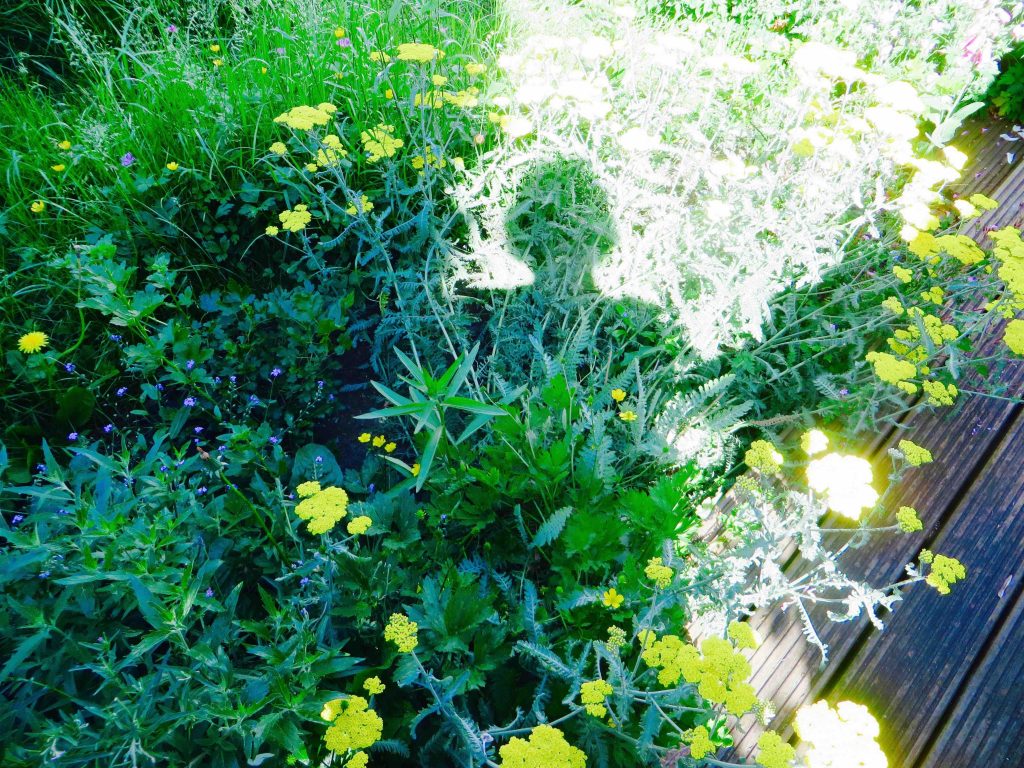
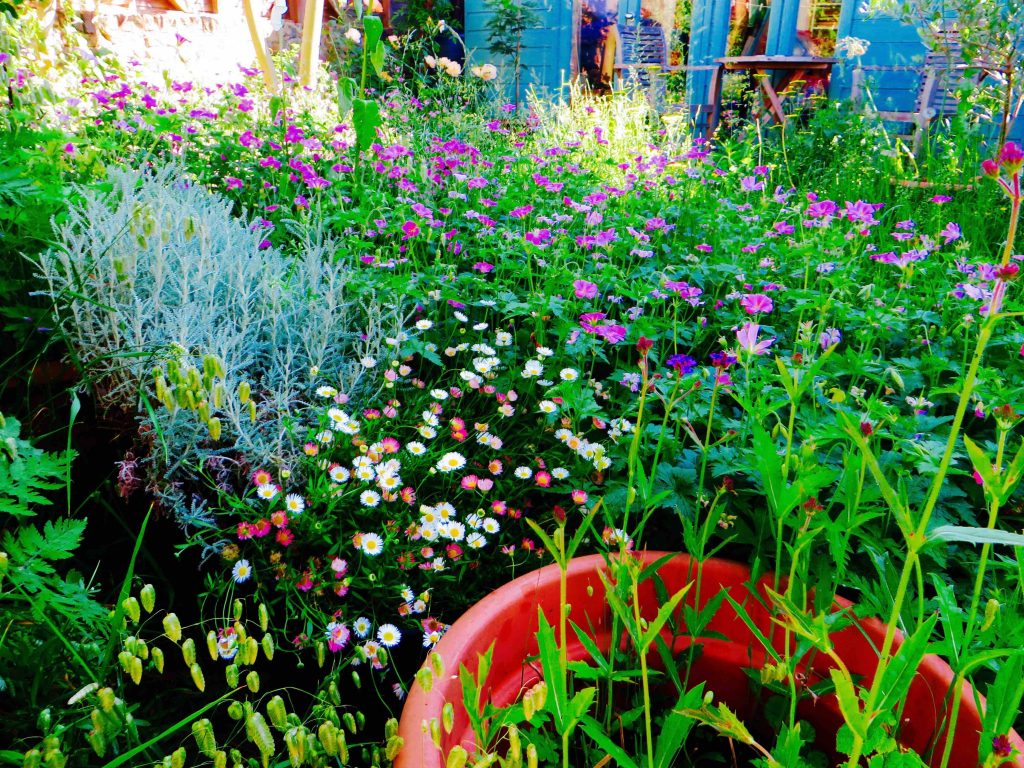
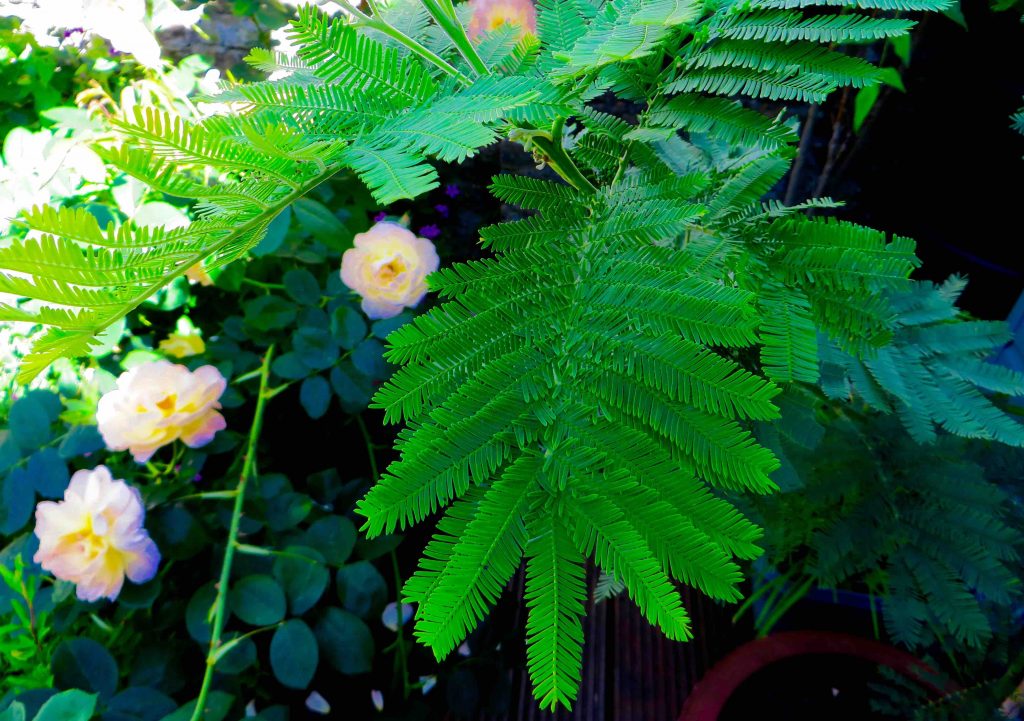
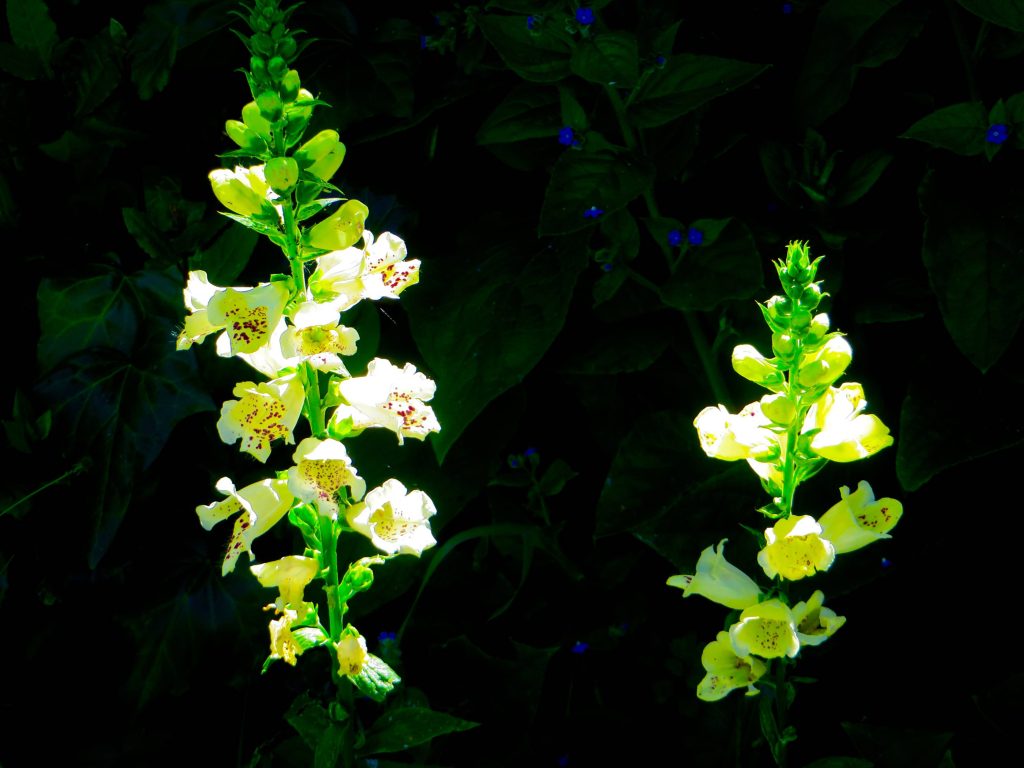
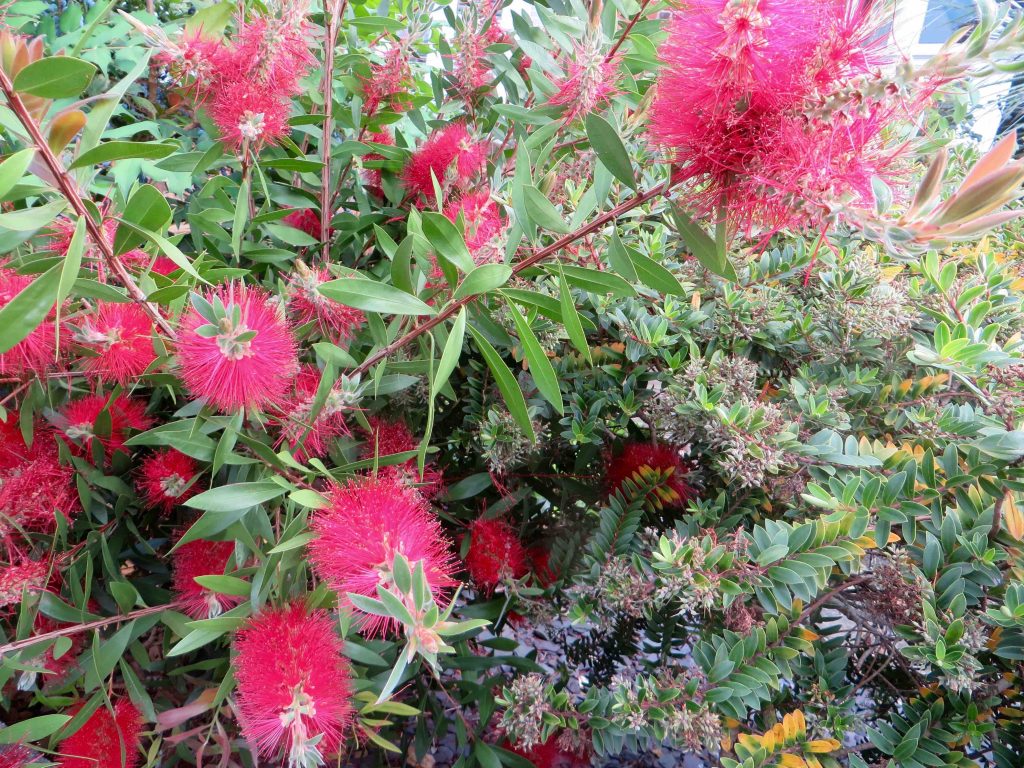


Certain types of butterfly lay their eggs on the underside of nettles. We imported a few plants and they have multiplied – somewhat aggressively!
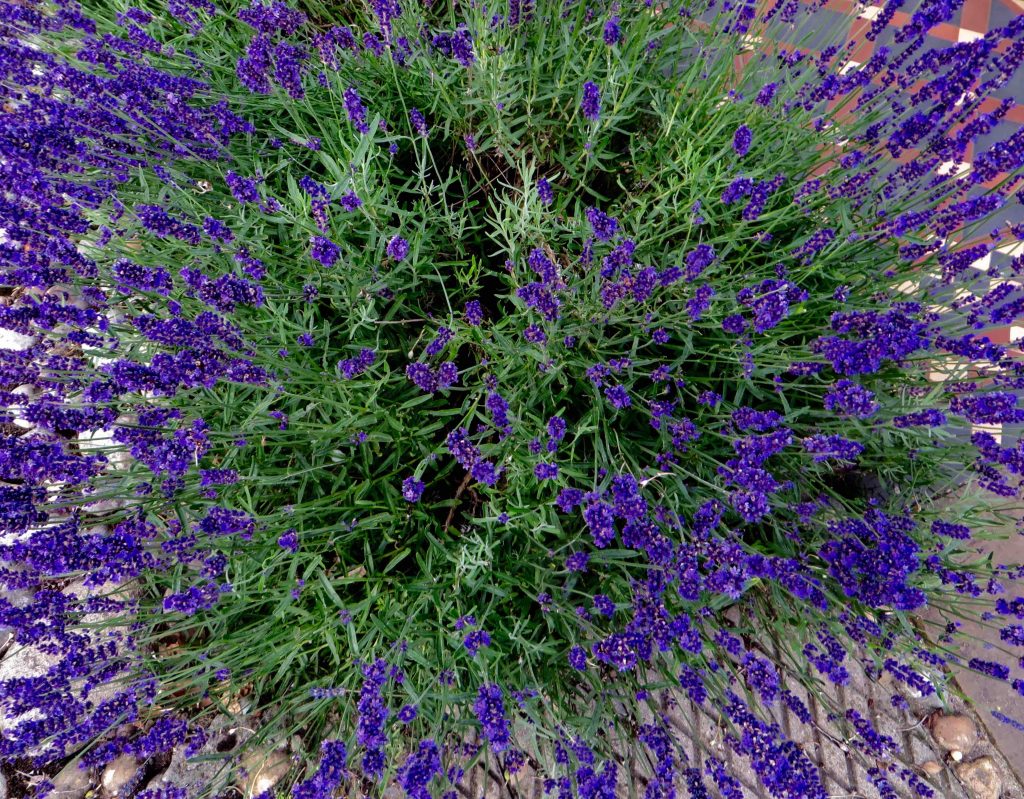
Not exactly wild – but a great favourite of bees and a strongly fragrant perennial.
Some plants are seen as weeds, partly because they arrive unannounced and grow so freely that they become invasive – like alkanet. The bees love the intense blue flowers but their rough and hairy leaves, tough tap roots and greedy nature need a firm hand. Plants like herb robert and the frothy white blossoms of the herb, sweet cicely, come back each year and are welcome, as is the evening primrose, a tall and sturdy plant with creamy yellow flowers. Lady’s mantle loves to spread too, often with a dewdrop in the middle of its fan shaped leaves. They just choose where to show up, wherever suits them. I like that.
Someone gave me a few seeds of quaking grass, also known as rattlesnake grass because of the shape – like a rattlesnake’s tail. They have interwoven themselves with the geraniums. Nipplewort flew in and found itself a place under the apple tree. There is now an App on your phone which will give you the Latin and common names of any plant you happen to come upon. Brilliant!

Our mallow shrubs in the front garden were here before us, so must be at least fifty years old. They continue to produce hundreds of flowers in August/September, visited by bees. I give them tea leaves and coffee grounds, a prune in the Autumn and they reward me ten times over.
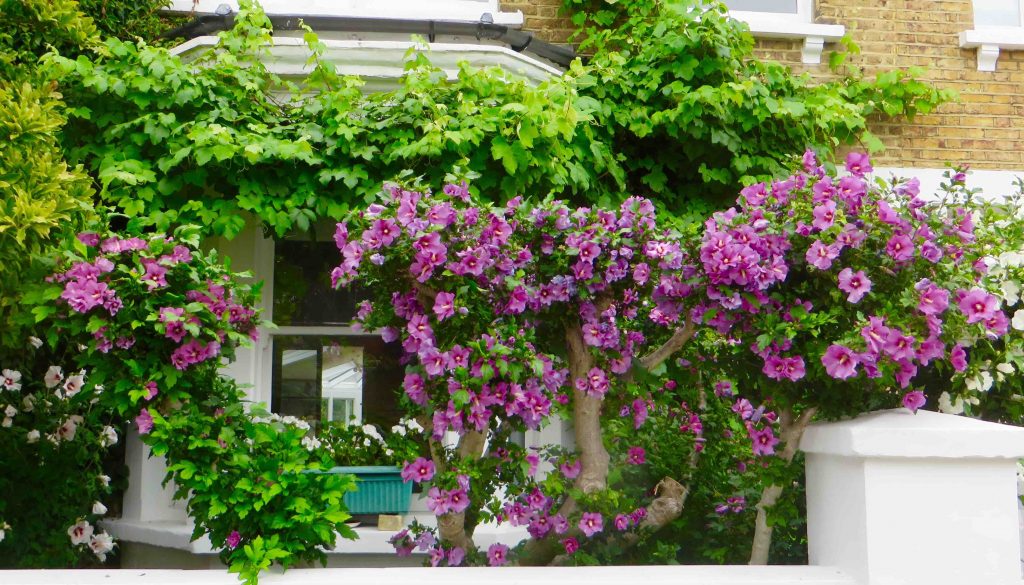
Different types of poppies have appeared at random, their seeds blown in on the wind from other gardens, or from further afield. We had scarlet ones with black centres, huge mauve, pink and purple ones and the ubiquitous, smaller, yellow ‘Welsh’ poppy, which sews itself all over the place and doesn’t mind growing in between the paving stones.
I’d like to have enormous swathes of poppies – reminding me of paintings by the Impressionists. Opium, which they produce, and which is a powerful drug, shows the darker side of their history. Opium Wars. Addiction.
The poem, ‘In Flanders Fields’ by Lt. Col Macrae, describes the poppies that grew on the battlefields after the First and Second World Wars, remembering those who gave their lives so that we might have better ones. The symbol of Remembrance Sunday is the red poppy.
This also reminds me of the famous lines from Rupert Brooke’s poem: ‘If I should die, think only this of me: That there’s some corner of a foreign field, that is forever England.’ The ephemeral beauty of poppies which return each year in the French landscape are a timely reminder of thousands of senseless deaths. Poppies incite powerful emotions. And opium is addictive.
At this point, on a more cheerful note, I’d like to recommend Michael Pollan’s latest book, ‘This Is Your Mind on Plants: Opium – Caffeine – Mescaline’. The book is divided into three parts. The first chapter is about the poppy, ‘papaver somniferum’, from which he makes a tea and, unbelievably, tells the story of the criminality of growing poppies in the U.S.A. Ten plus years in jail! Just don’t fiddle with the pods …
It’s a great read – like having a conversation with the author. Caffeine, which concerns the second part of the book, has him sitting down outside his favourite café, with his ‘addictive’ cup of coffee. I’d love to join him but he then ‘goes cold turkey’ for three months, as an experiment.
Mescaline comes from certain cacti – I probably wouldn’t use this myself but after I’d read the book I knew so much more about poppies, coffee and tea and what certain cacti can produce – all of it fascinating.
Pollan’s also a bit of a wizard with words and a good communicator. He reminds me of an English journalist, Hunter Davies, whose book, ‘Happy Old Me’, made me want to invite him out to lunch. I find them both very entertaining and I’m sure would be welcome companions – in completely different ways.
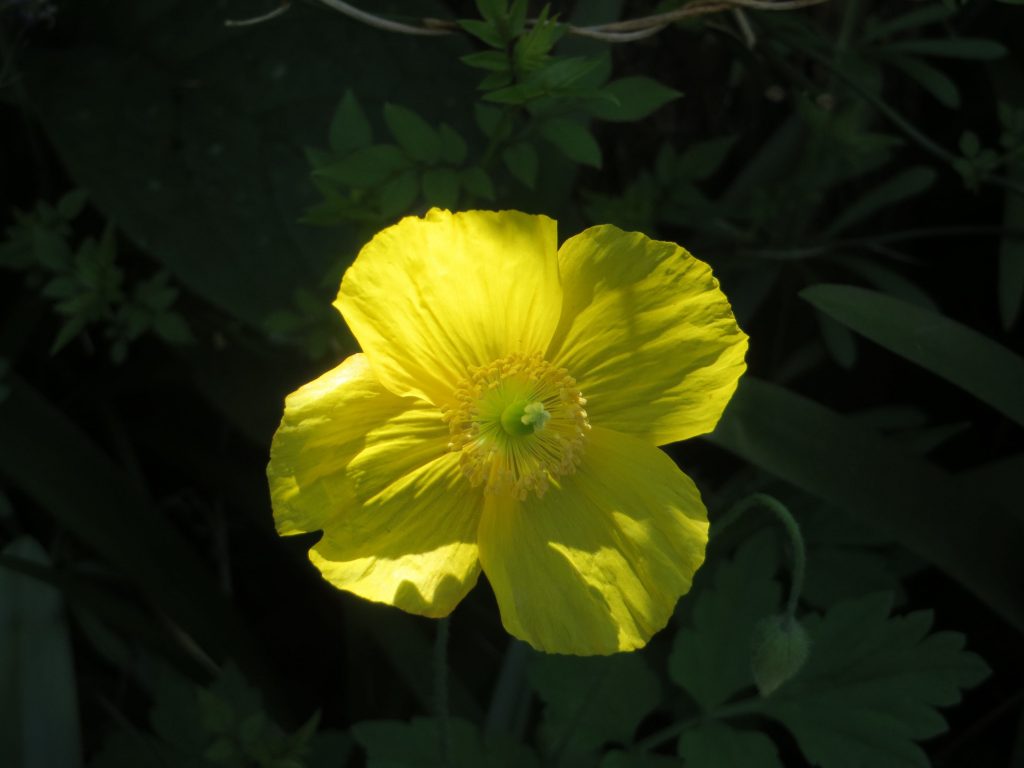
I don’t have pictures of red and pale mauve poppies but there are plenty on the Internet. That’s partly because the flowers come and go so quickly and I didn’t have many. However, I dried the petals when I found them on the ground.
Mind you, not only the petals. The dried seed pods look very good in flower arrangements. Some pods are huge, the ones in the photo below are tiny by comparison. It’s what you might do with the seed heads that concerns the U.S. government. Floral decorations are happily exempt!
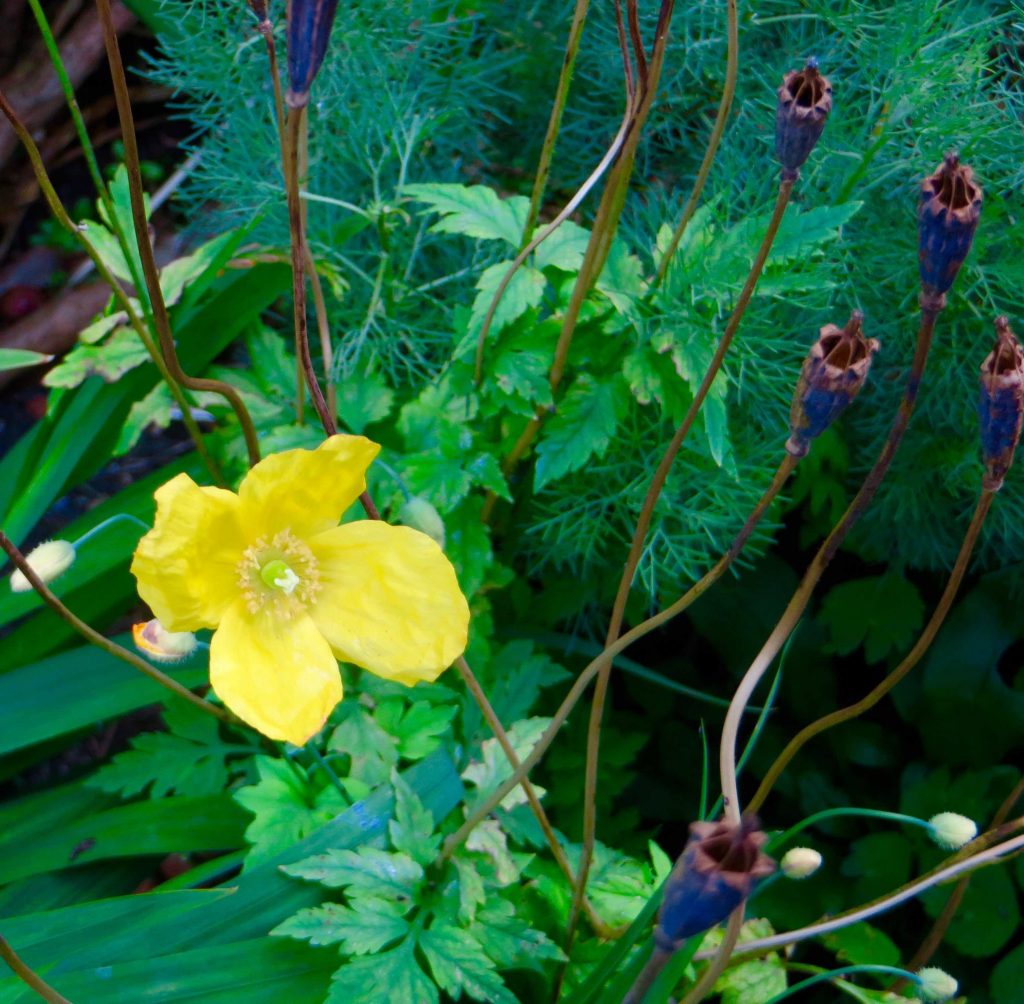
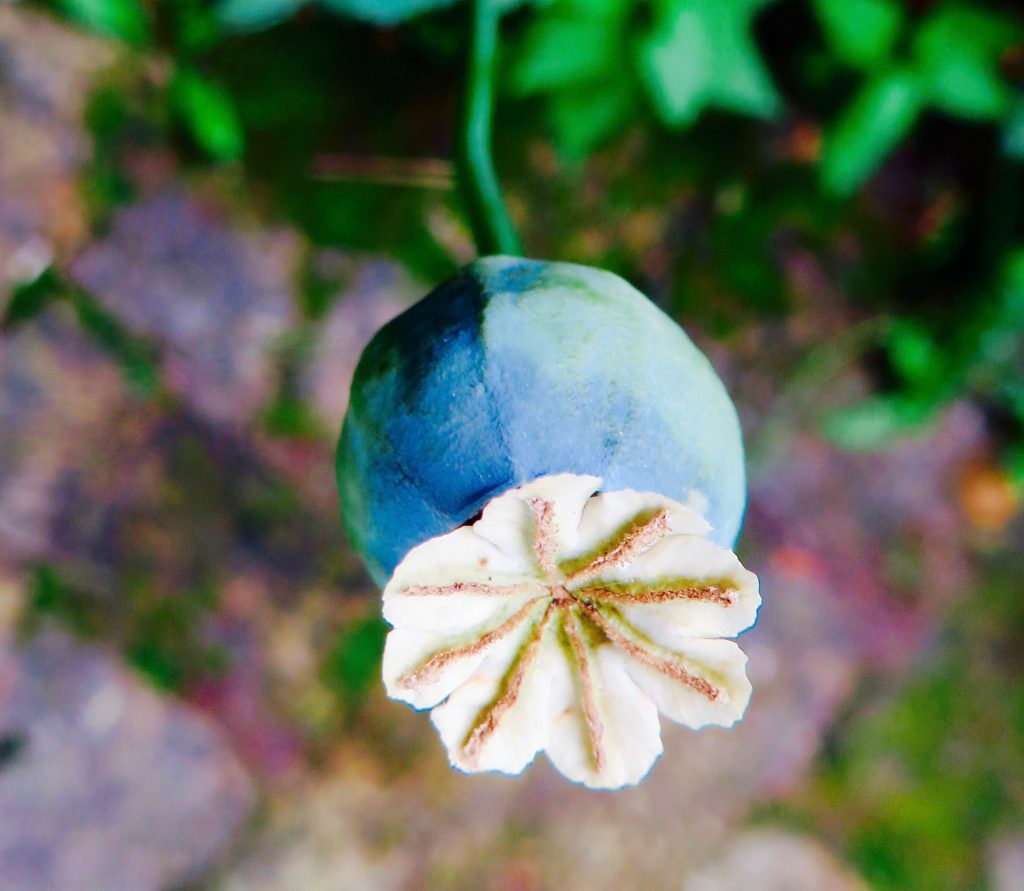
That was something of a digression from wilding my garden but I hope it opened up some doors of perception …
I passed a neighbour’s house and gloried in the blue of her ceanothus in the rain. Not wild but again, perennial.
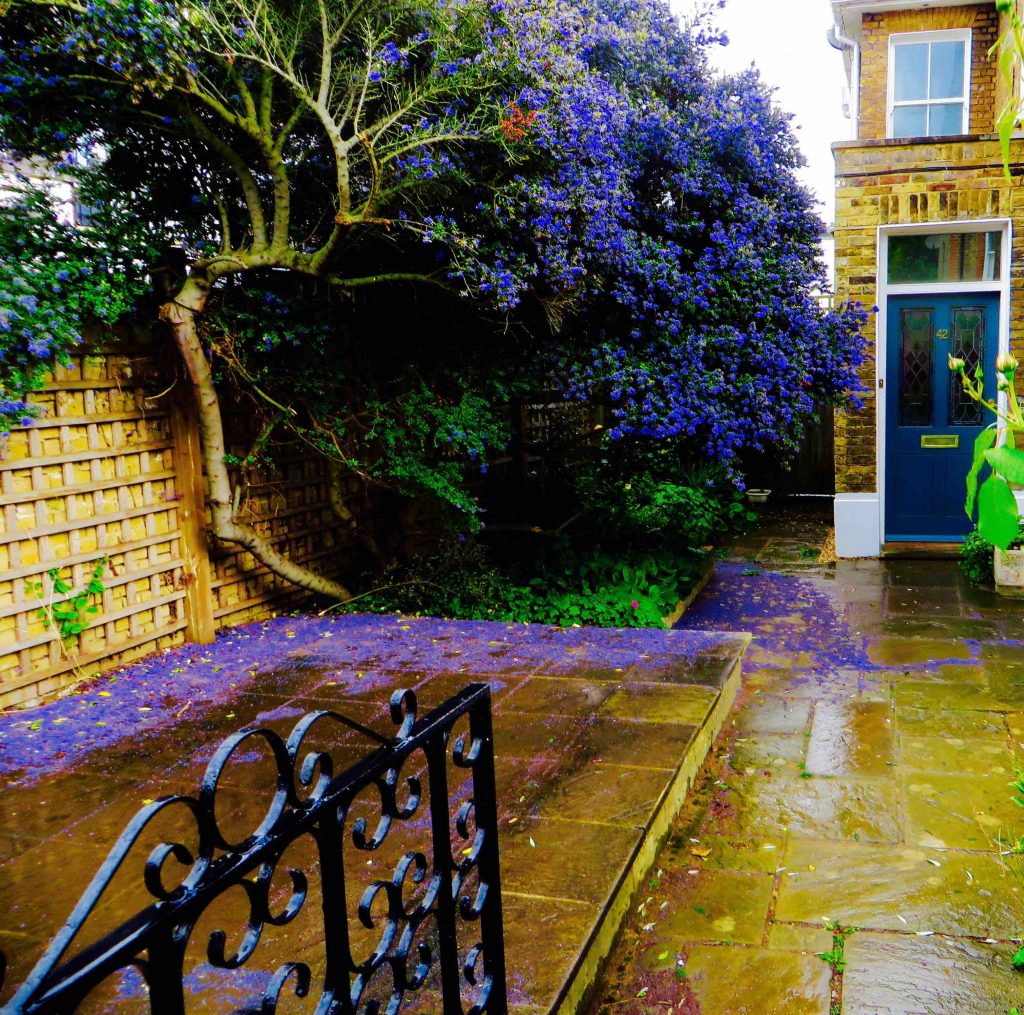
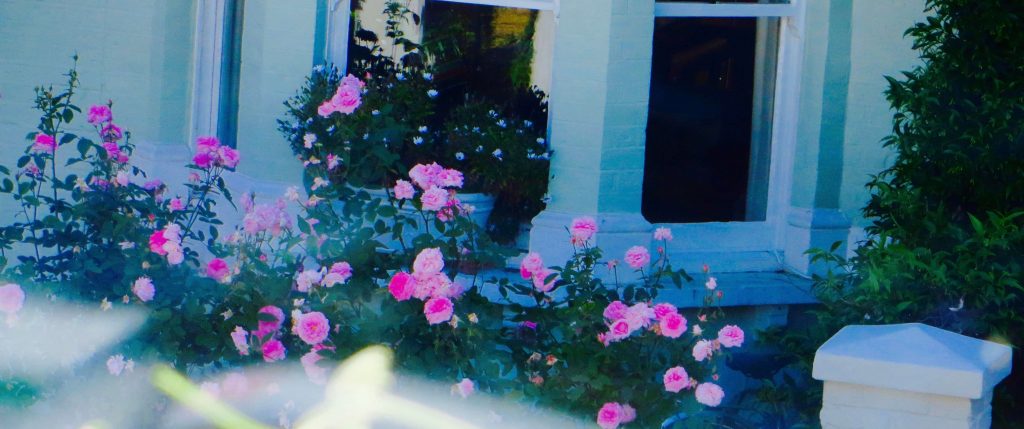
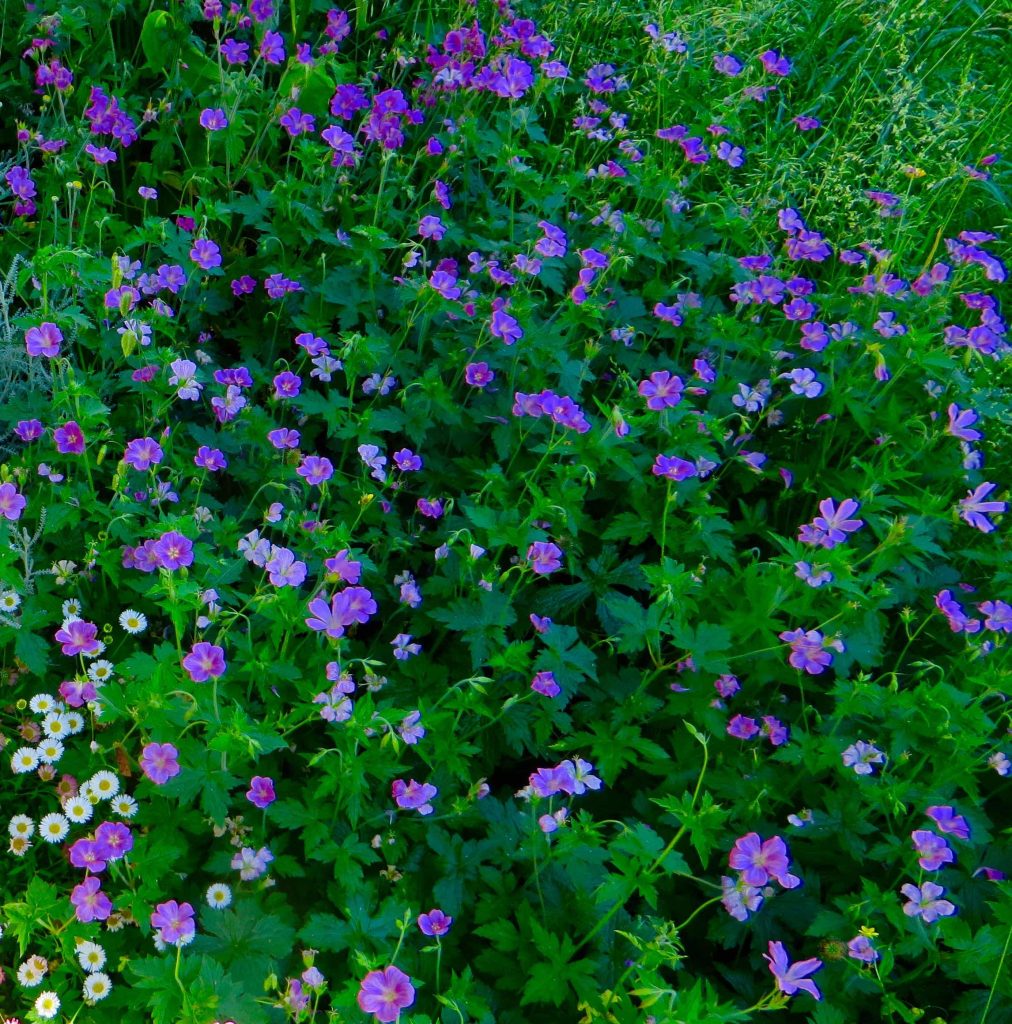
It’s interesting to see what plants flourish and what disappear when left to their own devices … the monsoon rains this July, causing flooding in neighbouring houses with basements, followed by 30 degree heat, have made everything larger and more feral than usual. And the ancient apple tree is bowed under the weight of the fruit this year.
I hope we’re increasing our pollinators and making our garden more friendly for the diverse lives of insects.
Below is a photo of our roses, which have flourished in this wilder place, despite the advances of bindweed and nettles. A colourful and hopeful note to end on this ‘wilding’ ramble.
